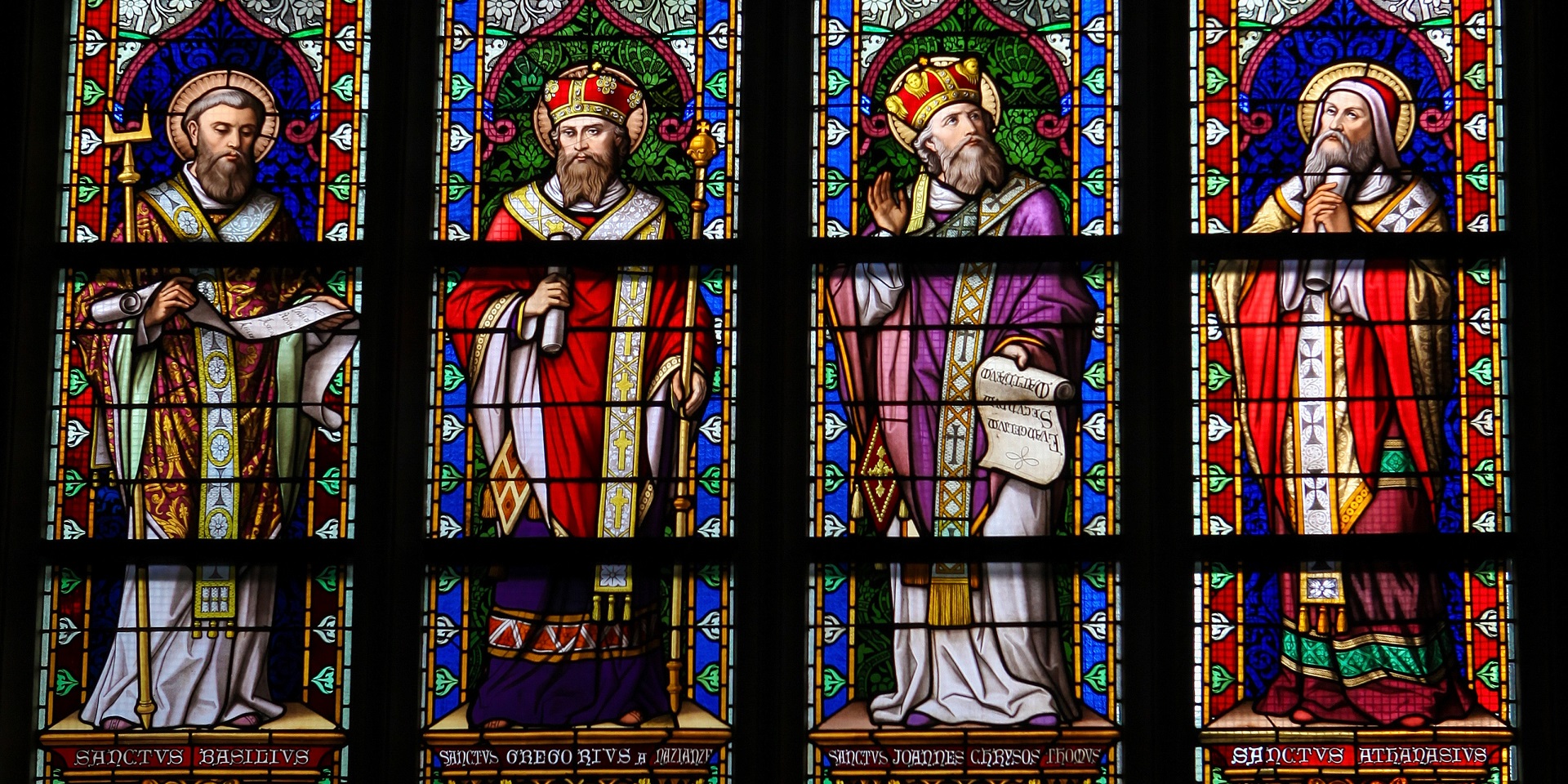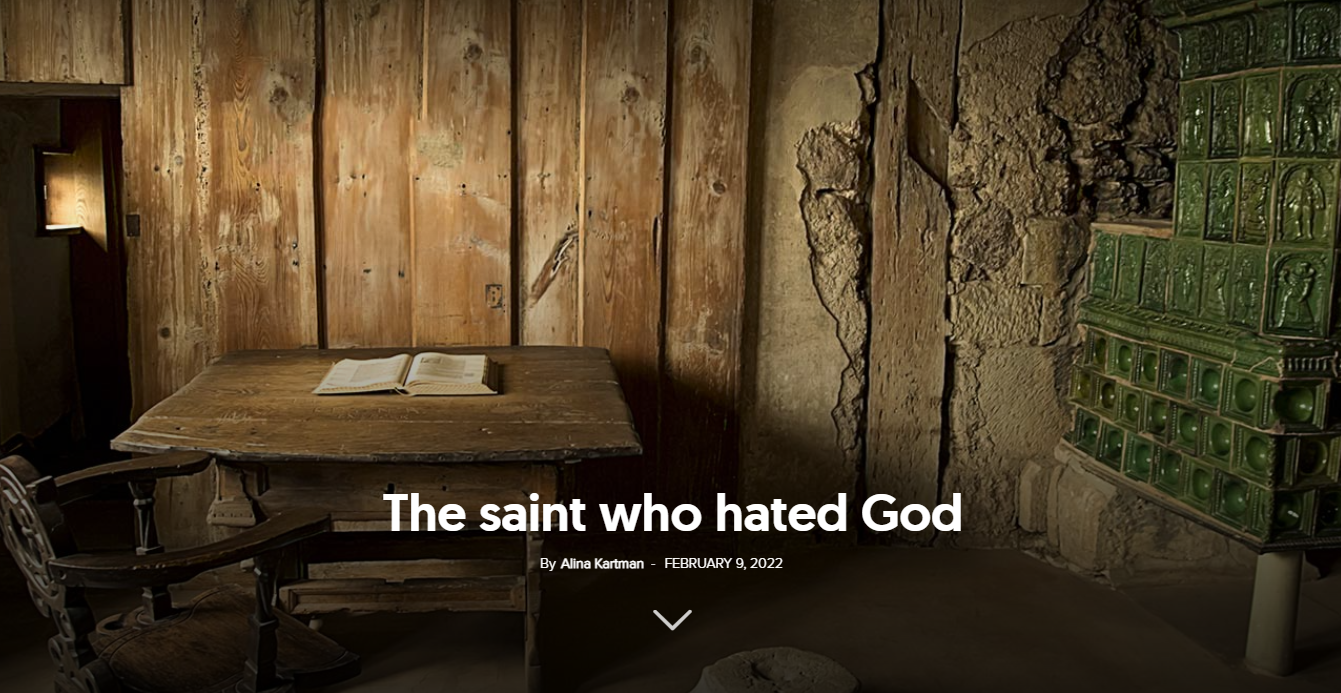On November 13, the Orthodox Church celebrates one of the most famous church fathers: John Chrysostom, Bishop of Constantinople, whose name is linked to the oldest and most widely used liturgy of the Eastern Church.
Calvin translated much of Chrysostom’s famous Homilies, while the Roman Catholic and Anglican Churches appointed him doctor and father of the church, giving him a place in the church calendar on September 13th. So, who is John Chrysostom? What was his contribution to the development and spread of the Christian faith? How much of what we know about him is history and how much is church tradition? And to what extent is his faith and practice found in the faith and practice of the Christian churches today?
Some biographical data
John Chrysostom was born in Antioch, in the year 347. His parents enjoyed a privileged social status, his father having an important position in a military unit. What is certain is that John studied oratory with a famous professor—probably Libanius, the most famous but pagan oratorical teacher in Antioch—completing his studies in 367 with a bright career as a lawyer in mind.
Around 369, John was baptized by Bishop Melatius, according to the New Testament ordinance of adult baptism. The baptism coincided with the renunciation of his civil career, with John becoming the bishop’s servant and helper for the next three years. “The Christian faction to which he attached himself was not in imperial favour at this time, and was obliged to assemble for worship outside of the city walls, across the river, on the military exercise ground.”[1]
We then find John in the ascetic school of Diodorus, and later with an old ascetic from Syria, subject to severe discipline. He lived in a cave, deprived himself of sleep and food for long periods of time, and devoted himself especially to the study of the Old and New Testaments. This way of life affected his health, the future bishop suffering from stomach and kidney problems for the rest of his life.
Because of these sufferings, but also thinking of Melatius, who was expected to return from exile, John returned to Antioch. Melatius’ Christian group was favourably regarded by the new king, so John was able to exercise his faith freely and was ordained a deacon in 381 by Melatius himself, and then, in 386, Melatius’ successor, Flavian, made him an elder.
Probably the most beautiful 12 years of Chrysostom’s life follow, years in which he devoted himself entirely to his writing and the preaching of the gospel. His impeccable oratorical style, his direct and practical advice caused him to be called “golden mouthed” after his death. However, these are the years about which we have the fewest historical testimonies and about which people have speculated the most. “Throughout this period, John preached on Saturdays and Sundays in the morning, and on weekdays in the afternoon.”[2]
When, on September 27, 397, all of a sudden, Nectarius, the bishop of Constantinople, died unexpectedly, the episcopal see—which after 381 had the second rank in the Christian world, after that of Rome—remained vacant. Interest in this position was quite high, and various interest groups were trying to impose their own candidates.
It seems that, without knowing anything about these intrigues, John ended up being put on the list of candidates by Eutropius, a eunuch of the king, and then, by his influence, came to be appointed bishop by a church synod especially assembled for this purpose. He was secretly taken from Antioch and brought to Constantinople, where on February 26, 398, he was ordained a bishop.
Unaccustomed to the political intrigues of the capital and to the moods of the monarchs and their consorts, Chrysostom tried to be polite but determined, to get involved, to give orders, and to rebuke, sometimes bluntly, anyone who did not fit into his pattern of thinking. The support given by Empress Eudoxia, the wife of Emperor Acadius, to the Aryan factions in the city made her the target of his direct messages, obviously arousing the support of some and the antipathy of others.
It was by virtue of these backstage arrangements among the various Christian groups in Constantinople in 403 that it was decided at the Synod of the Oak, not far from Chalcedon, that John be deposed from the episcopal service and sent into exile for not having presented himself before the synod organized by Theophilus, bishop of Alexandria. Under pressure from the masses, John was brought back in October, but remained in office until April of the following year, when a very acid sermon addressed to Empress Eudoxia sent him back into exile in Armenia.
Unfortunately, his opponents were not satisfied with this solution and intervened with the emperor of Constantinople for John to be exiled to a more austere place. At their insistence, the emperor sent him to a town on the eastern shore of the Black Sea, but the forced march there was too much for his already weak health. John Chrysostom died on the road, on September 14, 407. In 438, his bones were brought to Constantinople with great pomp and ceremony and he was then canonized. It was also then that he received the name Chrysostom, or “golden mouthed.”
In black and white
It is appreciated that to this day a history of the Eastern Church cannot be written without the mention of John Chrysostom. However, it is obvious—as in the case of all those who have been canonized—that part of the current image of Chrysostom is the creation of the church. Professor Remus Rus, a renowned historian of the Orthodox Church, also acknowledges that “John owes his popularity and importance to the history of the Church and Christian thought not so much to his administrative or political qualities, but especially to his literary work”,[3] thus suggesting that not all of his administrative or political decisions were the wisest.
Being a monk and enduring for a long time the rigors of an austere lifestyle, John was shocked by the luxury and political tricks of his confreres in Constantinople. He tried to impose the rigors of monastic life and promote a simple and modest lifestyle among those who cared for the life of the church. With the money saved in this way, John established numerous help centres for the poor and the sick.
He was interested in sending missionaries to the Thracians and the Goths, seeking to help the simple in learning the spiritual paths. However, the methods used were not always the most tolerant (according to the modern definition of the concept). First in Gaza, then in other cities, he asked the king to destroy the pagan temples, and then he sent missionaries to convert their inhabitants. Of these temples, the best known is that of Marnas in Gaza, which was destroyed by Roman troops in 401. In its place, Empress Eudoxia financed the construction of a church that would bear her name.
One of the most difficult topics for the modern reader of Chrysostom’s sermons is, without a doubt, that of the Jews. Adversus Judaeors is a whole series of homilies spoken in Antioch, in which he calls the Jews “pigs,” associating the synagogue with pagan temples full of vices. The discourses, strange as they may seem today, are specific to the time and the frequent contradictions between Christians and Jews, and are probably addressed to Christians who observe both Christian and Jewish holidays.[4] John showed the same attitude toward those who kept both the pagan and Christian customs.
As for what in the Eastern Church is called the “Liturgy of St. John Chrysostom,” historians believe that “the evidence that he had anything to do with its composition is unconvincing.”
The picture painted of the bishop of Constantinople, however, only widens the gap between the past and the present, between the saint and the modern man. Chrysostom, no matter how great and deserving, was above all a man, and the elements of his humanity should serve as a lesson and example to us.
At the same time, Calvin correctly observed that the great asset of John Chrysostom was his inclination toward Scripture, in a personal and literary manner, in contrast to the allegorical interpretations of Origen and others like him. This was probably the secret of his “golden mouth”—a book about people, the good and the bad, but especially a book about God.
Adrian Neagu has been a Christian ever since he was a child. He believes God offers us evidence for faith, both when He reveals Himself in His children’s lives, and when He seems to be hiding from them.




















